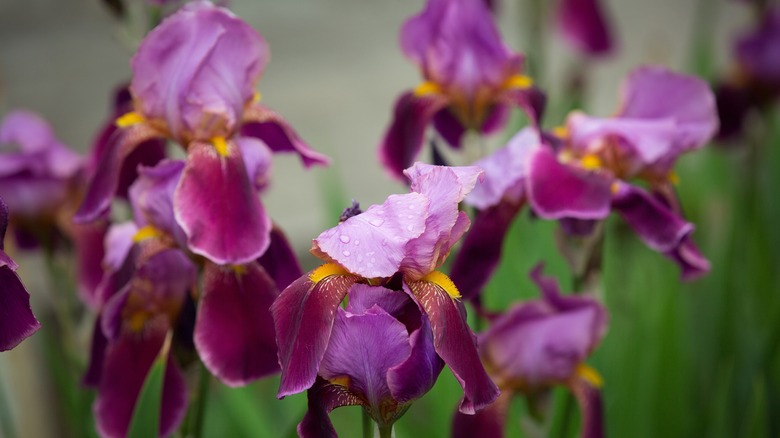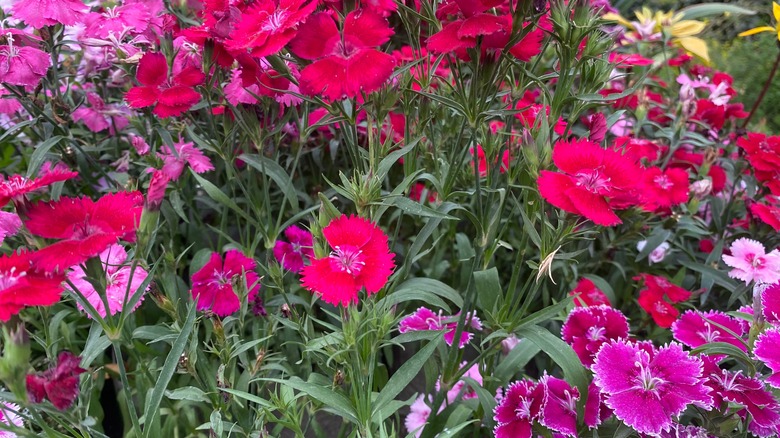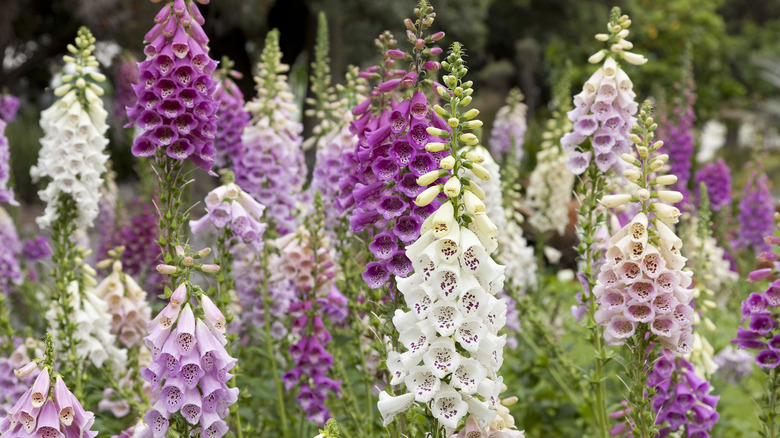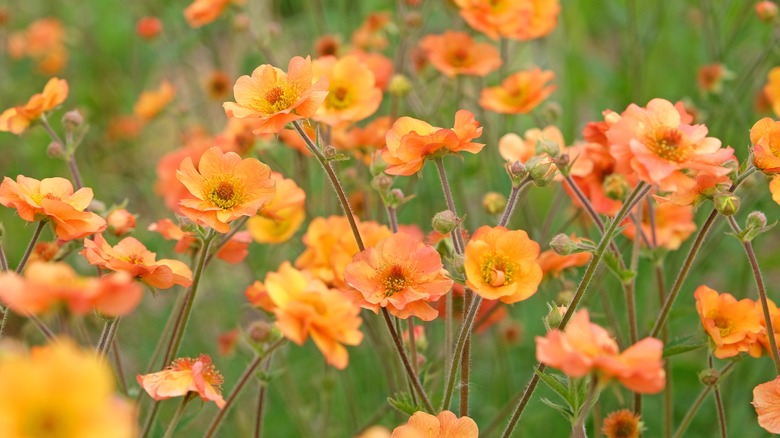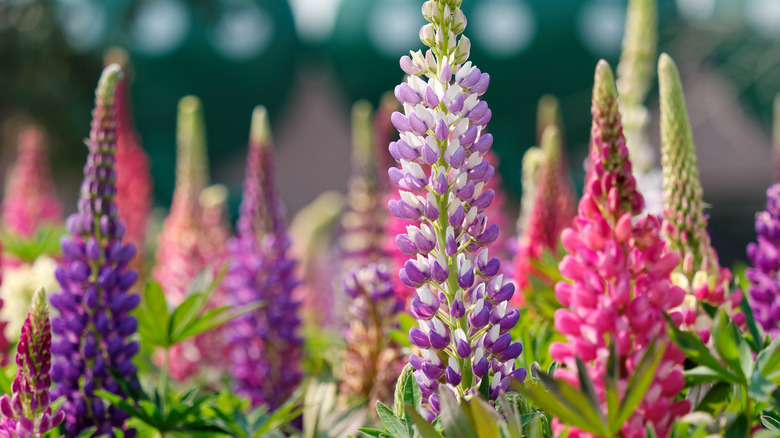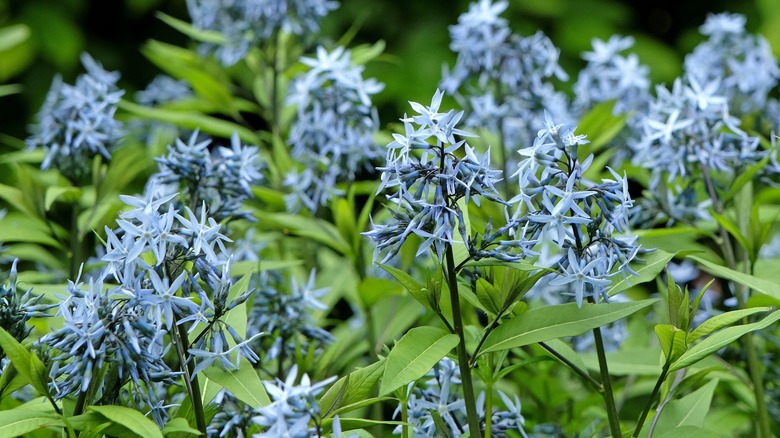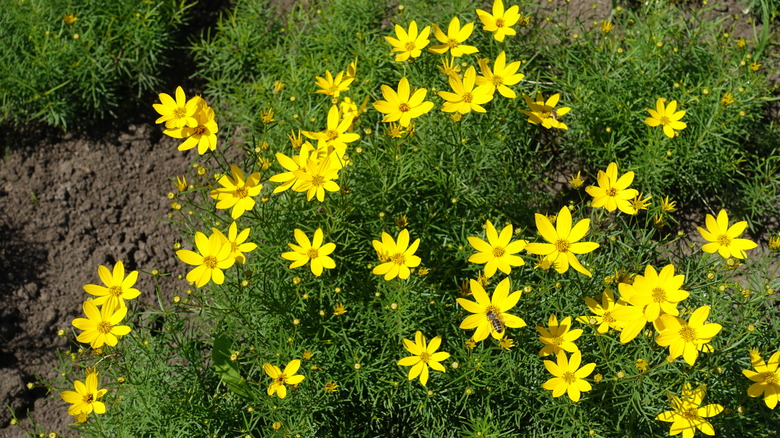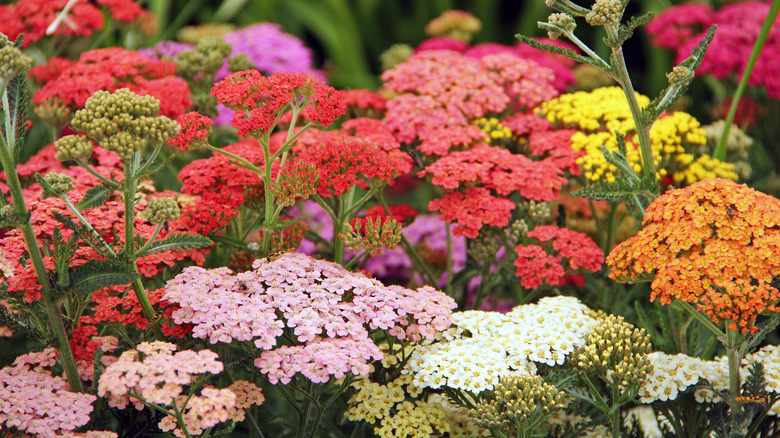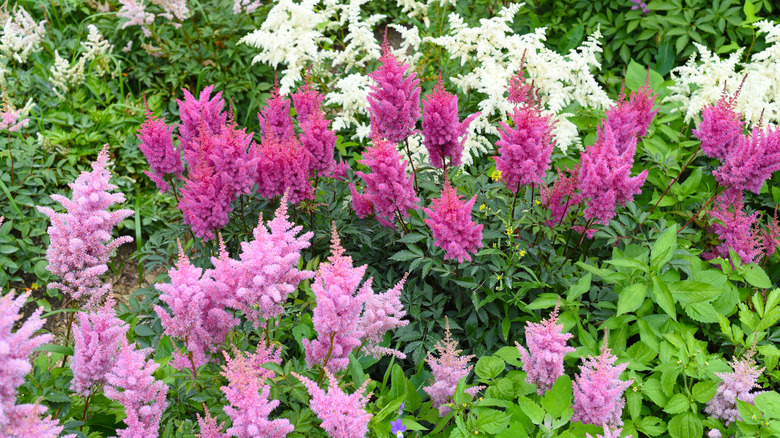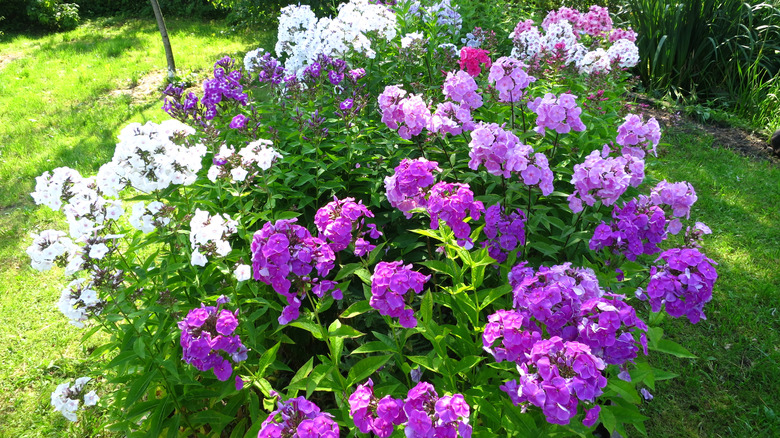Enchanting Spring-Flowering Perennials That'll Keep Blooming Once Your Irises Fade
There are many different types of irises (over 300 species) to plant in the garden. The most commonly grown are tall German (aka bearded) irises, with hundreds of cultivars. Though they are beautiful, sturdy growers, bearded irises have a fairly short bloom season. There are a number of colorful spring-blooming perennials that begin to bloom as irises fade, and planting them near your irises keeps your late spring garden looking fresh and lively.
The Iris bloom season starts with dwarf and reticulata irises in early spring and ends with Siberian irises, which last until mid-summer. Irises do need a fair amount of space, however, since they spread via fleshy rhizomes or, with Siberian irises, thick woody roots. Because of the amount of space they take up and the relatively short flowering season, some gardeners like to disperse irises throughout the garden, among other flowering perennials.
The best types of May and June-blooming perennials to plant near irises are those that pop up quickly as temperatures warm and don't have overly large root systems to compete with iris rhizomes. This includes perennials with loosely-formed leaf clumps, including dianthus, coreopsis, yarrow, columbine, and geum. The lacy leaves are also a great contrast to the solid, flat leaves of iris foliage (which stays vibrant until autumn). You may also want tall bloomers to replace tall iris flowers once you cut them back, including lupines, foxgloves, and tall phlox.
Dianthus
Dianthus, also known as pinks, are cottage garden favorites for their long bloom time, spicy clove fragrance, and vivid colors. There are many species of dianthus. The 'Sweet William' type grows in clumps and is often grown as an annual but will reflower for a few years. The spreading types, including carnations, have grey-green, needle-like leaves. Dianthus like full sun and well-drained soil and benefit from deadheading to encourage a second round of blooms. Try 'Bath's Pink' (pale pink heirloom), 'Firewitch' (hot pink with blue-green leaves), and 'Spiked Punch' (two-tone pink double flowers).
Foxgloves
Foxglove is a delightful late-spring bloomer with a cottage garden look. They bloom well in partial to full sun. Foxgloves are biennials, but some varieties will reseed themselves, allowing you to have some every year. They're generally easy to maintain, but growing foxgloves successfully requires very well-draining soil, as thick clay soils that hold onto moisture may cause them to get crown rot. Some very tall varieties of foxglove may need some staking to support them.
Geum
Geums, also known as Avens, bloom in mid to late spring, making great companions for spring bulbs and irises. The delicate, frilly flowers in shades of yellow, pink, red, and orange rise on slender stems over clumps of rounded leaves that resemble those of annual geraniums. They bloom well in partial to full sun and prefer a rich, well-drained soil. Divide geums every other year to keep them flowering at their best. Great varieties to try to include are 'Totally Tangerine' (bright, warm orange), 'Pretticoats Peach' (pastel peach and pink), and 'Red Dragon' (vermilion red).
Lupines
There are wild lupines, also known as Texas bluebonnets, in shades of violet-blue, and cultivated lupines, which come in many different colors and bi-colors, including yellow, pink, red, purple, and white. The bluebonnets reseed readily in warmer zones, while cultivated lupines are more cold hardy perennials. The tall flower spikes and attractive foliage lend dramatic color and texture to the late spring garden. Lupines have long tap roots and prefer well-drained, somewhat sandy, loose soil and full sun. Lupines are fairly easy to grow and care for but dislike being moved, so choose your planting location carefully.
Amsonia
Amsonia (also called "blue star") is a handsome perennial with star-shaped pale blue flowers that look great in any garden. Its growth habit and woody root system make it look and behave a bit like a shrub. Amsonia grows up to 3 feet tall, prefers well-drained soil, and partial to full sun. It can be divided frequently if you desire to keep it smaller. The late spring blooms last for weeks, and in autumn, the foliage turns a lovely golden yellow. You can cut back the stalks as part of your clean-up at the end of the season.
Coreopsis
Coreopsis (folk name: "tickseed") is a vigorous, pollinator-friendly perennial that spreads either by reseeding or by spreading small roots. Plant in partial to full sun in well-drained soil; once established, it is drought-tolerant. Deadheading spent blooms will encourage a second round of flowers through late summer. The threadleaf variety gives a feathery texture to the garden border, and the familiar bright yellow flowers now come in a vast range of colorful hybrid cultivars. Try 'Berry Chiffon' (white-tipped rose pink flowers), 'Jethro Tull' (golden yellow flute-shaped petals), 'Moonbeam' (creamy pale yellow, bright centers), or 'Red Satin' (dark red, yellow centers)
Yarrow
Delicate-looking yet sturdy, yarrow is a gorgeous flowering favorite that can help you get a handle on garden pests. It loves the sun and is very drought-tolerant. It comes in many colors, and some varieties have root tendrils that may spread somewhat vigorously, but they are still fairly easy to control–yarrow blooms for weeks from late spring to late summer. Deadhead the faded blooms to encourage a second round of flowers. Some colorful varieties to try are 'Terracotta' (peach, orange), 'Apricot Delight' (shades of peach and pink), 'Strawberry Seduction' (bright red), 'Moonshine' (lemon yellow), and 'Summer Berries' (shades of plum and lavender).
Astilbe
Astilbe is an easy-care perennial with lacy leaves and fluffy flower plumes in shades of white, pink, red, and purple. Once established, the plant forms a dense mass of roots, easily divided with a shovel or garden knife. Some varieties like full sun, but it's happiest in partial shade, in fertile, well-draining soil, so plant it in shadier locations near your irises for non-stop late spring color. Astilbe blooms from late May through August, depending on the cultivar. Try 'Maggie Daley' (lavender pink, blooms mid-summer), 'Red Sentinel' (medium to deep red, late spring), and 'Peach Blossom' (pale pink, early summer).
Tall phlox
Tall phlox, also known as garden phlox and Phlox paniculata, is a long-flowering perennial that gives wonderful color and height to the summer garden. They do well in partial shade., but need some space for good air circulation as they're somewhat susceptible to powdery mildew. Many popular heirloom varieties and exciting hybrids come in new colors and more compact sizes. Phlox forms flower buds in late spring and blooms for weeks in mid to late summer. Try 'Tenor' (magenta), 'Nicky' (deep purple), 'Katherine' (lavender and white), or 'Eva Callum' (bright two-tone pink).
